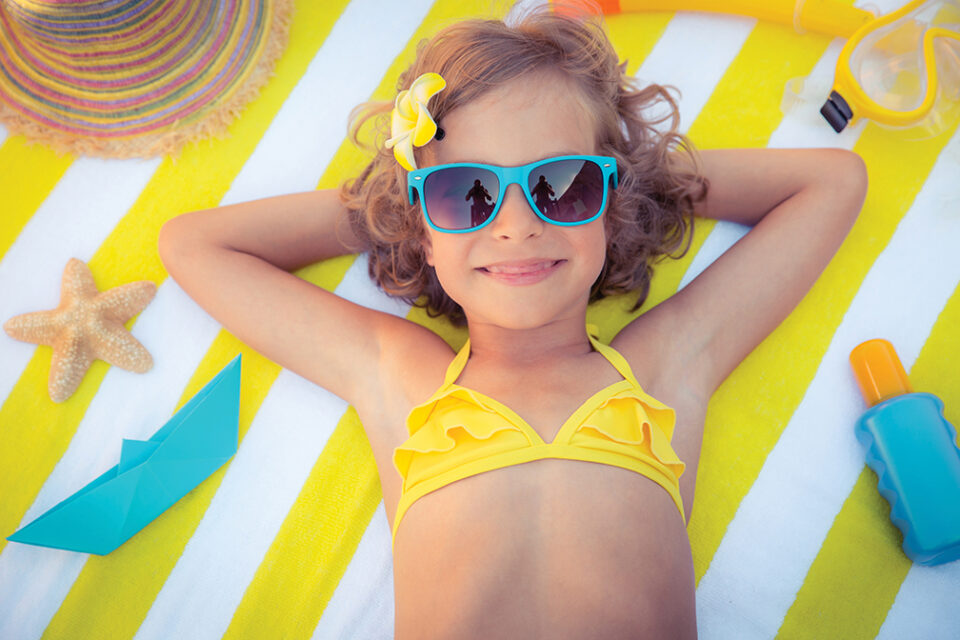Are you in too much of a rush to put sunscreen on your kids? Don’t be. Build a little extra time into your routine on sunny days because young skin requires 30 minutes for that protective film to develop. Also, be aware that skin cancer in adults is directly related to sunburns in childhood.
First things first: The American Academy of Pediatrics (AAP) emphasizes babies younger than 6 months stay out of direct sunlight. Instead, protect them with shade, use sun hats and protective clothing rather than relying on sunscreen alone since it’s not recommended for ages under 6 months.
Never Say “Sunblock”
Sunblock or sunscreen? Is there really any difference? And is that the only way to protect kids?
Manufacturers of sun products ditched the term “sunblock” years ago. And while chemical sunscreens are the most common product for filtering ultraviolet rays to protect kids from UVA and UVB rays, sun safety includes more.
“Sun protection involves several different things,” says Pranav Sheth, M.D, a dermatologist at Group Health — a TriHealth physician partner. “Many people think of sunscreen, but that’s not the only way to get sun protection,” Sheth explains.
Parents can help little ones to avoid direct, excess sunlight between the hours of 10 a.m. and 4 p.m.; have kids wear protective clothing and wide-brimmed hats; reapply sunscreen every two hours and check light skin periodically for damage. Children with blonde or red hair, blue eyes and a family history of skin cancer are more prone to sunburn, so be particularly careful with them.
“One can’t undo skin damage,” Sheth says, “however, you can reduce damage and possibly the progression of skin damage with good sun protection measures.”
When it comes to applying sunscreen on kids, many doctors have concerns about spray sunscreens since aerosolized particles can be inhaled — especially dangerous for children with asthma or other lung issues.
Remember, too, that sunscreens can expire, so follow expiration dates listed on products.





